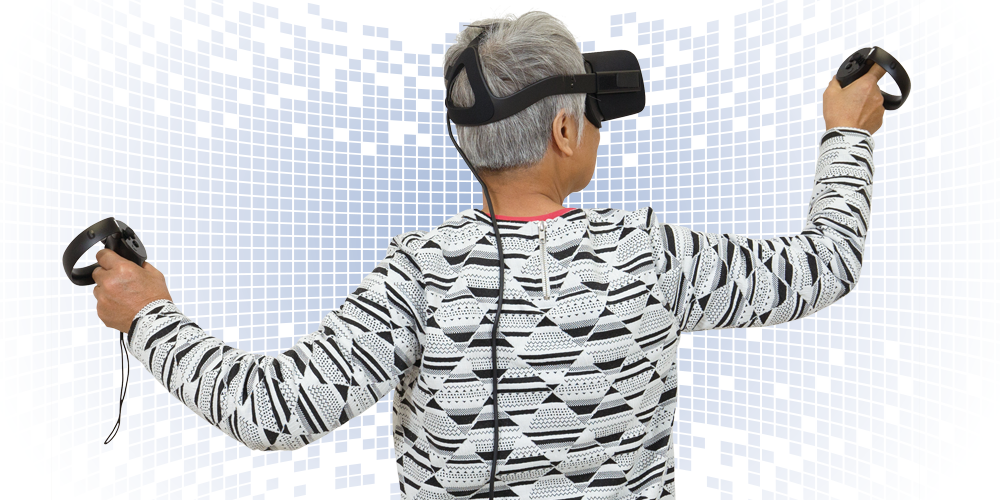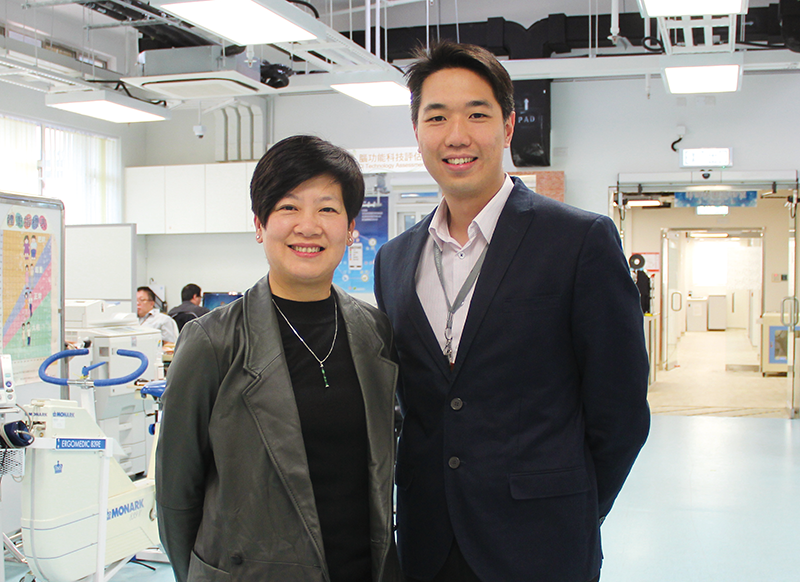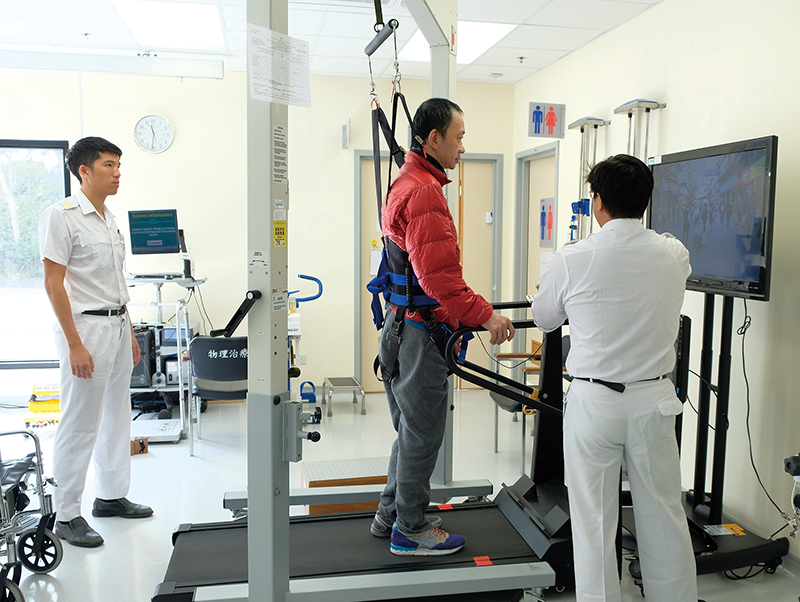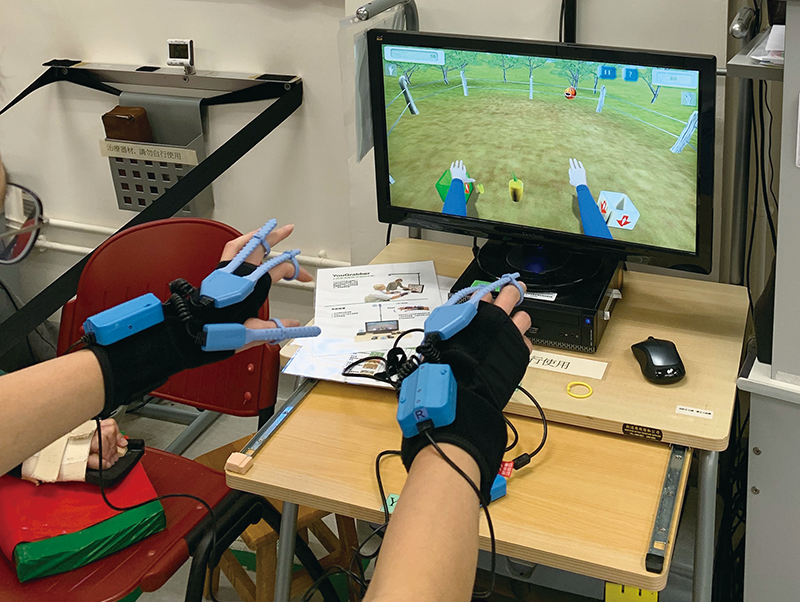Virtual reality opens new horizon in healthcare
Virtual reality (VR) is not only used in TV games or entertainment but also in healthcare. The technology is used by a number of Hospital Authority (HA) hospitals to improve the effectiveness of patient rehabilitation services and professional training, breaking the constraints of environment, time, resource utilisation and safety.
VR is rapidly becoming a popular application for rehabilitation services in public hospitals, including fields such as occupational therapy, clinical psychotherapy, the treatment of degenerative brain disease, and pain and stress management. It is also applied in training for medical and nursing staff. Dr Serena Ng, Centre Head of the HA Community Rehabilitation Service Support (CRSSC), has pioneered the use of VR in occupational therapy since 2005, using it to help patients learn skills such as using ATMs, catching MTR, crossing the road and using escalators.
VR technology falls into two categories: immersive and non-immersive VR. For rehabilitation, non-immersive VR is commonly used in treatments which are related to physical activity. It is because these treatments focus on the authenticity of the training content, that is, for example, the size and speed of the escalator and the duration of traffic signal need to be similar to the real one. This ensures patient safety and the participation of therapist in training. “Patients can perform physical training with appropriate use of tools and steps in a larger space and safe environment. The medical personnel and the patient can observe and evaluate the coordination of body functions and the proper use of limbs,” Dr Ng explains.
Meanwhile, immersive VR is used for treatment which emphasises participant’s actual feeling within a simulated environment and requires slight movement. “This is to let the patient feel the virtual environment and then make emotional and cognitive reactions, although the user may sometimes feel dizzy when exposed to a VR environment,” Dr Ng says.
VR technology is being used overseas for the diagnosis of patients, says Senior Occupational Therapist Marko Chan of the centre. A research team in Greece has developed a virtual supermarket cognitive training game with big data analysis as a screening tool for early identification of patients with cognitive impairment. Rehabilitation technicians are meanwhile exploring the possibilities of pairing virtual reality and artificial intelligence to help paralysed patients regain movement. For instance, when a patient with a paralysed hand wears a VR headset, the system instructs the patient to release his hand. Once the device detects the patient’s brain signal for releasing a hand, the screen displays the virtual image of a released hand, affirming the patient’s feeling that he can indeed release his hand. Prolonged training of this kind can help a patient regain control of his hand muscles.
Two kinds of VR
Immersive VR
It involves equipment such as a head-mounted display, a tracker or data glove, and a sensory output device. The user enjoys 360 degree panoramic vision and fully integrates into the scene.
Non-immersive VR
It involves a windowed virtual environment through a display. Users view and interact with the images on the screen.
● Entering the virtual world in HA
COVER STORY
● Virtual reality opens new horizon in healthcare
● Rehab as you play: motorcycle driving simulation system
● Rehab as you play: cooking assessment and training
● Practice makes perfect, patient safety enhanced
● Experiential learning fosters public awareness of mental health
PEOPLE
● KWC dragon boat racers paddle their way to international glory
HELEN HA
● Better communication to fight winter service surge
● Exercise in neighbourhood parks with Rehab Anywhere!
WHAT'S NEW
● Run Green@0303 New Year Run 2019
● One stitch at a time: show patients you care
● From self-worth to contribution
● Brainpower expert advocates primary care
● PMH Day Chemotherapy Centre takes on a new look
FEATURE
● My weight loss journal: case 1
● My weight loss journal: case 2
● Learn from dietitians: eat healthy
STAFF CORNER




